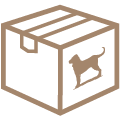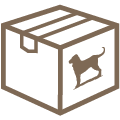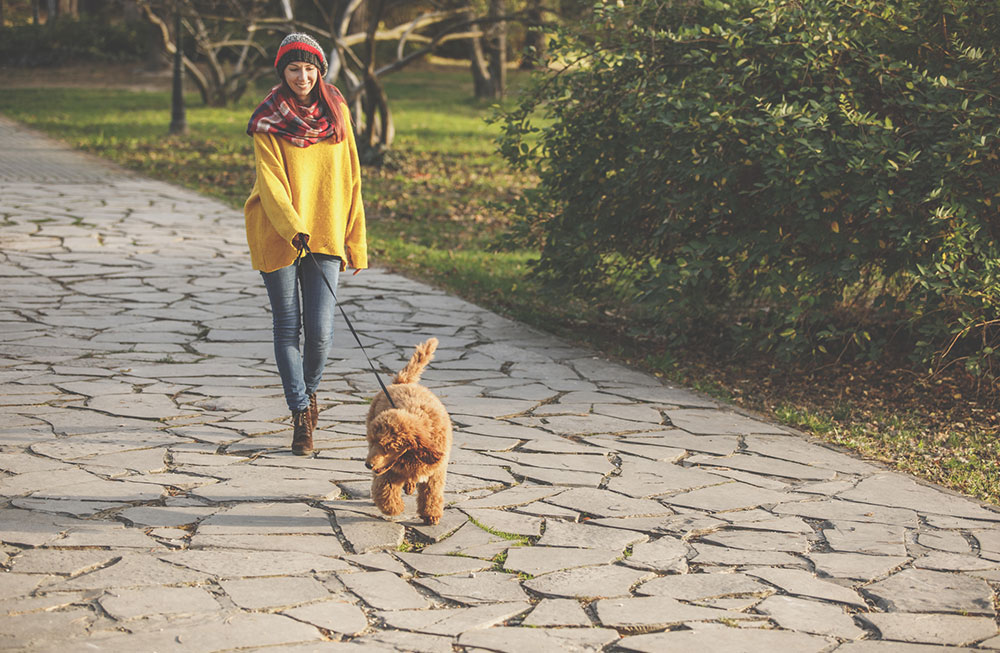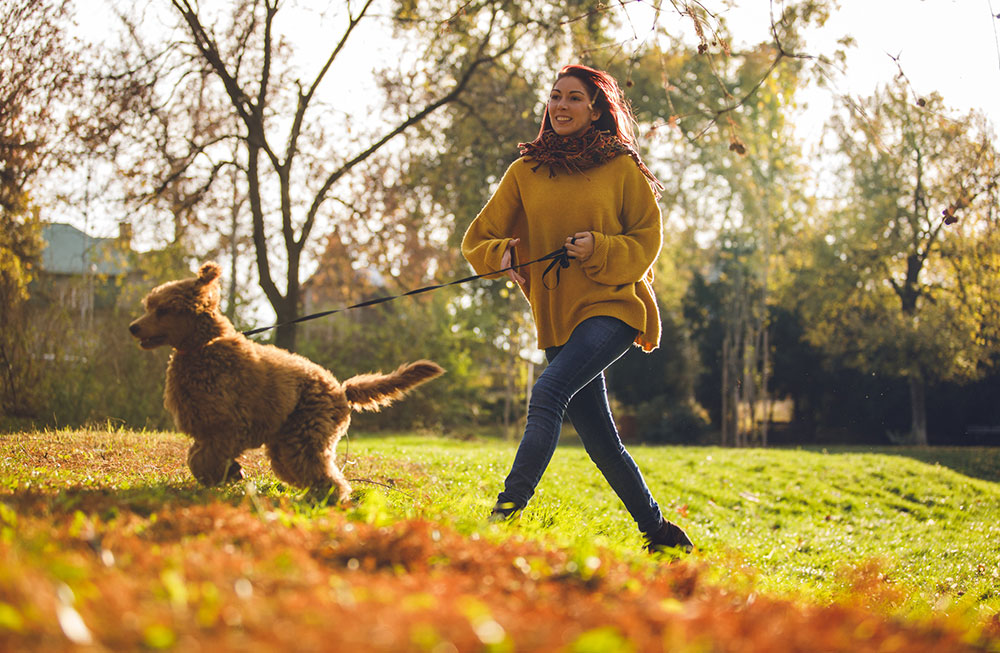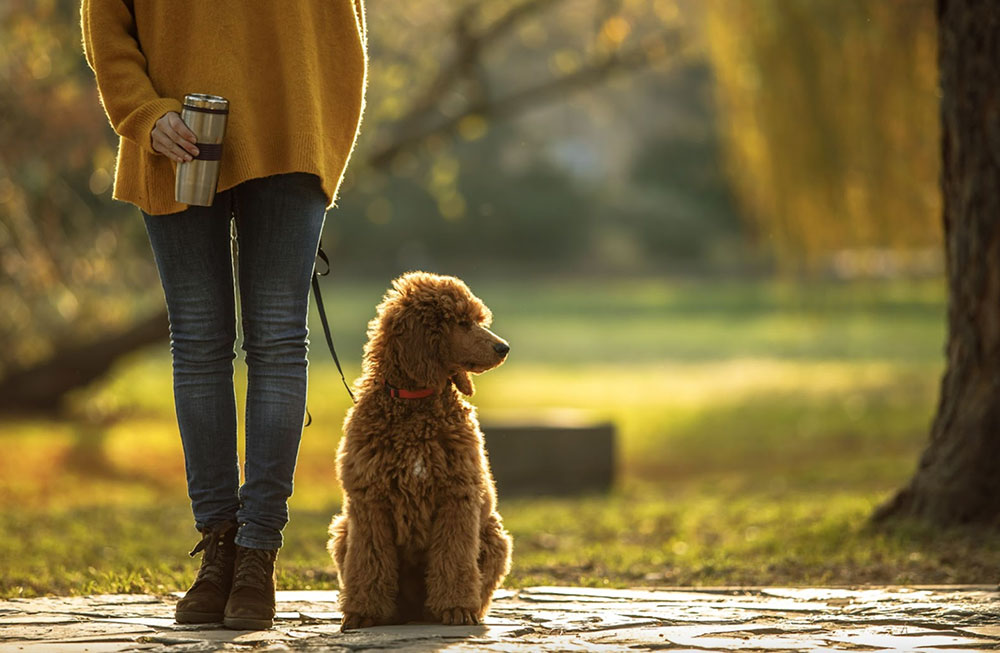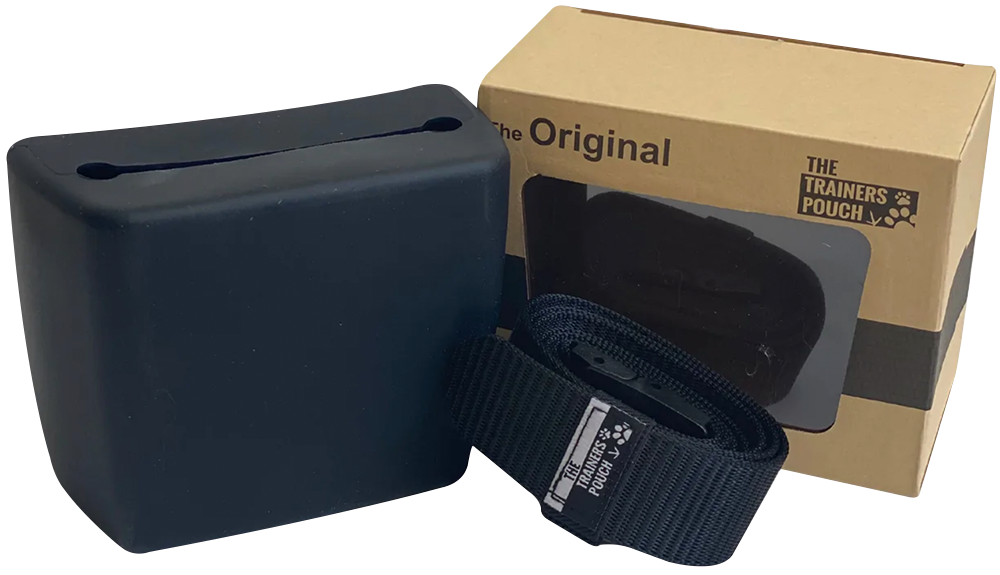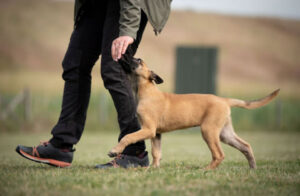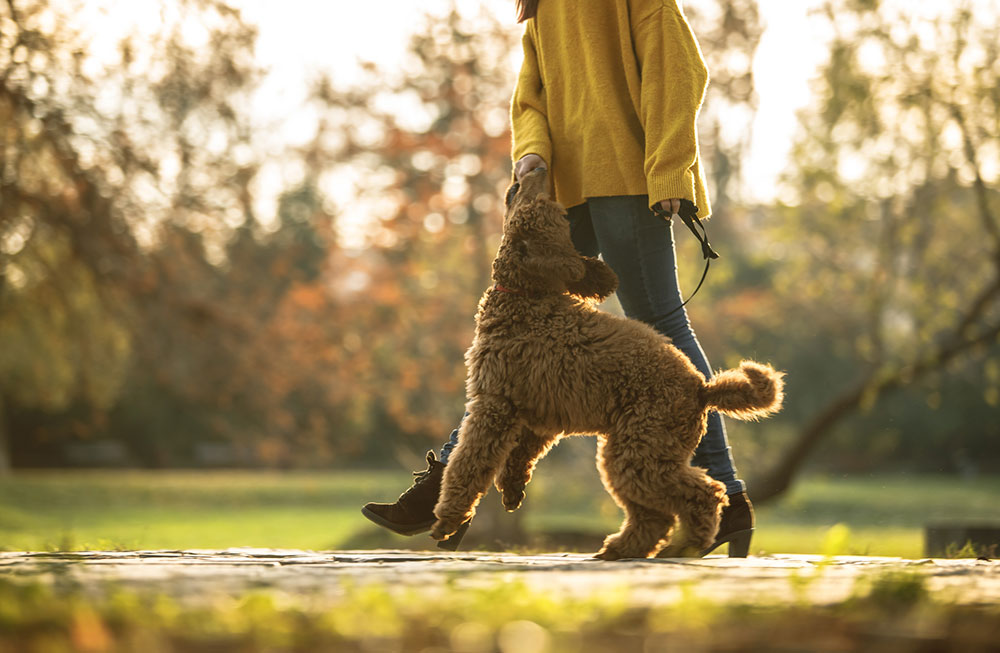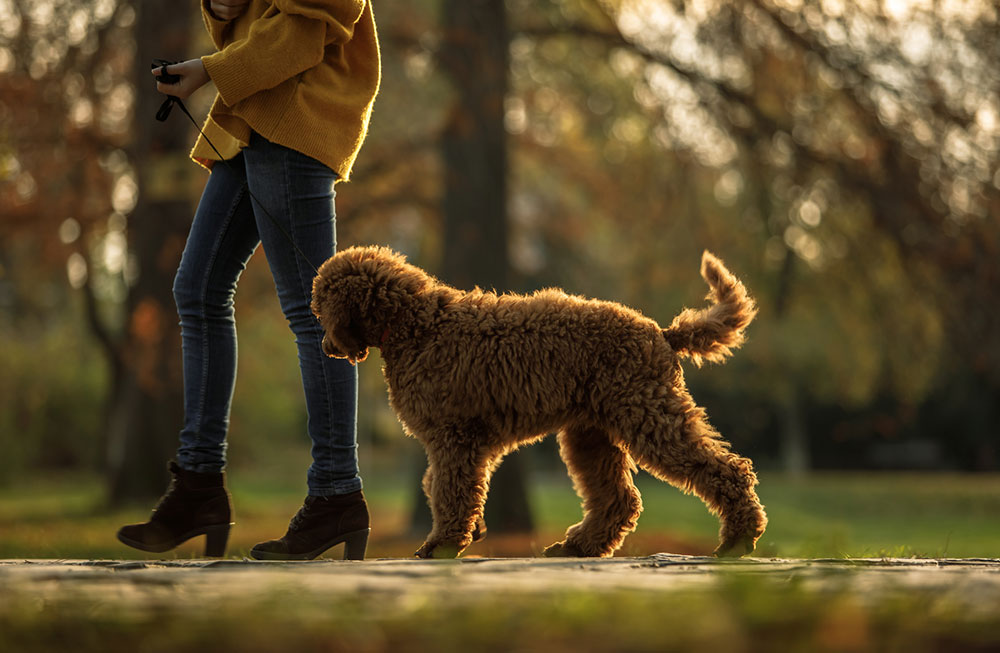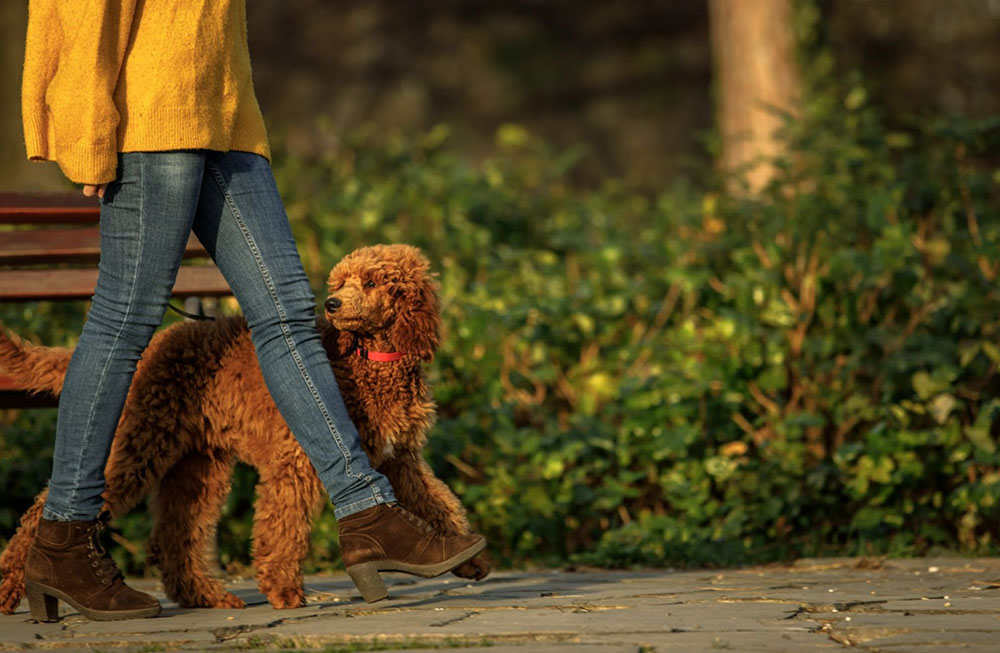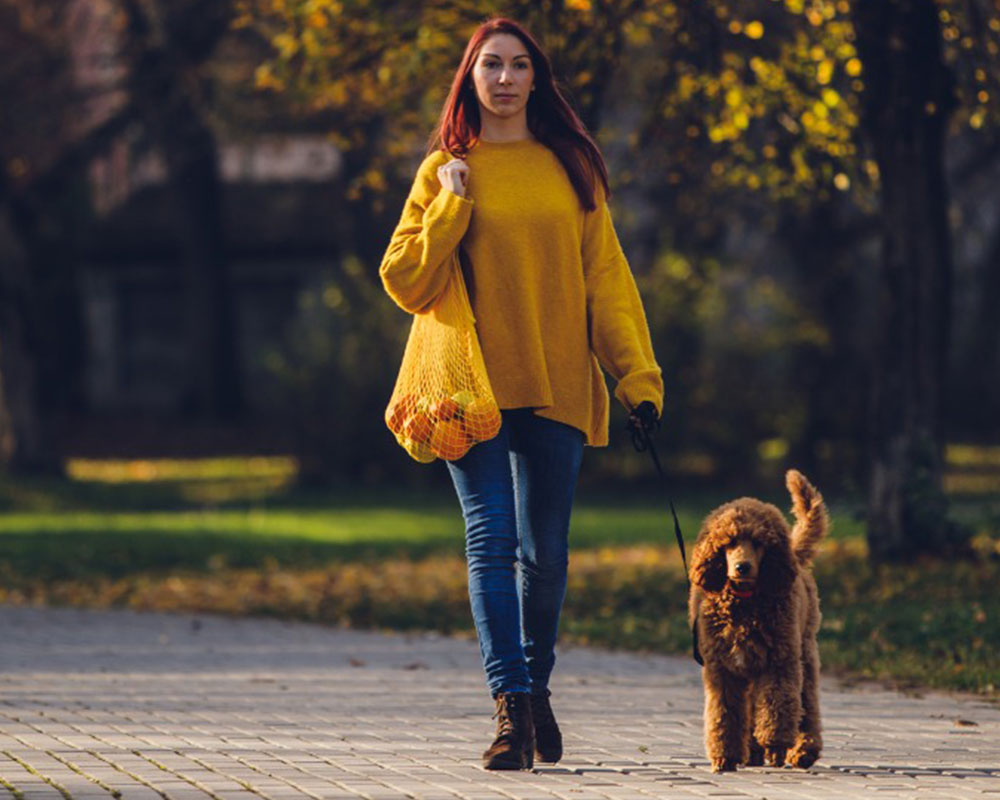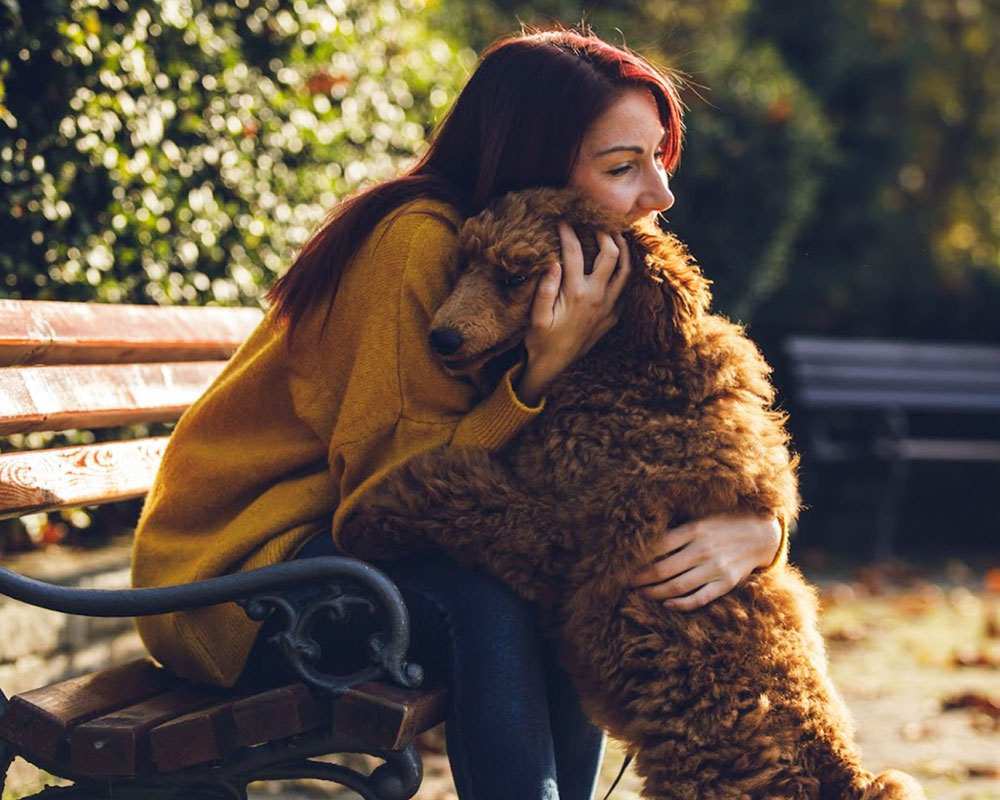Stop pulling on the lead
It is a common request of dog owners to help them train their dog to stop pulling on the lead. But as all good dog trainers know, stopping dogs from doing anything is not the way to approach the problem. Instead, we need to identify what it is we want the dog to do instead of the problem behaviour.
Why do dogs pull on the lead anyway?
It can’t be comfortable! Some dogs even gag and choke on the tight lead. Punishment techniques are no fun for dog or person and not easy to master for the average dog owner. All too often, when a corrective jerk on the lead is applied or the owner yells, the pulling typically returns after just a few seconds, or minutes if you’re lucky. So why do they keep doing it?
Because it works for them! Or so they think. I’m sure in their minds, many dogs believe that they have to pull on the lead in order to progress forward; if they didn’t pull, they would be standing still. Think about it: what happens when the dog pulls on the lead? They move ahead. You could say, that every step you take with the dog pulling on the lead, is reinforcing the pulling by the fact that the dog is moving ahead.
Reinforcement of pulling stops now!
There are many techniques that ensure pulling is no longer reinforced. Every time there is the slightest tension on the lead, the walker could:
• Immediately stop-dead; no further progression on a tight lead;
• Immediately take two or three steps backwards; no further progression on a tight lead; or
• Immediately turn and walk in the opposite direction. Initially, you will probably be walking in circles!
It’s not easy to be successful with these types of techniques alone, because: pulling on the lead probably has a strong history of success and reinforcement; the dog walker would need to be absolutely consistent in ensuring that any degree of pulling is not ever successful again (if it works occasionally, they’ll continue to check if it will work now); and it’s really tedious for both dog and person.
Show the Dog What to do Instead of Pulling
Sorry, but there is no easy way around training the dog. You’re going to need to commit to a training programme. Groan! Hey… look on the bright side: you love your dog so you’ll probably actually enjoy the training once you get started; and your dog will definitely enjoy the special interaction with you.
Set up for Success!
• Identify your dog’s favourite food treats. Don’t be lazy! If it’s cooked chicken meat, then so be it! Get a good supply of whatever treat your dog deems to be top of the pile – divide it up into small quantities and keep a good supply at hand in the freezer.
• Get yourself a quality food treat pouch. Plastic bags are the worst! My favourite is The Trainer’s Pouch, from two of my favourite people, Jenni and Ryan Tate.
• Ensure your dog has a high food drive before conducting a training session: his next meal is due or overdue. If your dog lacks food drive generally, you might need to do a little investigation – it’s not natural for dogs to be picky eaters. Adjustments might be needed.
• Before you head out for a training session ensure you are comfortable: you’ve been to the bathroom; had a drink and something light to eat; you’re wearing your comfy joggers and they’re double-knotted; your clothing is comfortable if not fashionable; and you’re not due to be anywhere for the next 30 minutes minimum.
• Ensure the dog is comfortable: had the opportunity to toilet; had a drink but nothing to eat recently; and is comfortable in the training environment.
• Find a training location that is minimally distracting for the dog. The aim is to avoid competing with environmental distractions for your dog’s attention. Accept the fact that your dog will be in training sessions, not going for a walk as such, for some time yet. You might need to load the dog in the car and travel to a location where he is allowed off-lead, such as a friend’s yard, whilst undergoing lead training.
Start Training
• Decide where you want the dog’s head to be whilst walking with you, because that is where the food treat will be delivered. Commonly, we advise delivering the food treats on the outside seam of your pants, at the dog’s nose height.
• Do whatever it takes to get the dog’s head to the correct position, facing the same direction as you. You might move yourself to the correct position so that you can deliver a food treat. You could hold your hand full of food treats to the dog’s nose and manoeuvre him into the correct position.
• The idea is simple! Deliver food treats when the dog is in the correct position. Take care not to allow the dog to push your hand forward or wide of the correct position. Food treats will only be delivered when the dog’s head is in the correct position.
• Reinforce the position heavily with praise and food treats. It’s a great place to be for the dog.
• Initially, aim to deliver food treats continuously: as soon as the dog swallows, the next one is there. It’s like there’s a food tap above his head in that magic spot. There is no reason for the dog to move out of position.
• Keeping your food-loaded hand on the dog’s nose, take one step forward continuing to deliver continuous food treats. Repeat at least five times.
• Now try taking a right-about turn on the spot – still delivering food treats continuously.
• Take three steps forward – continually delivering food treats.
• Start combining randomised number of steps and turns, speeding up, then slowing down, continuously delivering food treats. Try a left-about turn where the dog has to move out of your way.
• Once your dog is enjoying the challenge of moving with you in the correct position in order to gain food treats, we’ll start to randomise their delivery. Hold position for two steps – reward – hold position for three steps – reward – hold position for one step – reward – hold position for right-about turn and two steps – reward.
• Continue to randomise delivery of the food treats, sometimes stretching it out longer than ever before and other times delivering a treat after just one or two steps.
• Get the food treats out of your hand – keep them in the food treat pouch. Now you can mark the correct position with a ‘Good’ or click, then reach for a food treat from the pouch to deliver to the dog.
Some Extra Considerations
• If the dog moves forward of the correct position, forward movement must be halted. I find taking my hand short down the lead towards the dog’s collar and simultaneously taking two or three backward steps, is most effective. Keep the lead short so that the dog cannot move away or even sniff the ground. Hold this position for ten seconds before stepping off again. A scolding voice is not necessary – the dog has lost forward progression and no interesting alternatives are available – you can be speaking in a praising tone of voice – the fact is the dog has lost!
• If you start training lead walking, but then you take the dog for a run to the shop to pick up a bottle of milk and let him pull like a steam train because it’s not a training session, give up now!! Your dog needs you to be consistent: pulling on the lead is never going to work in any way for the dog ever again!
• If you have a highly practiced and persistent puller, you might like to consider making the dog’s entire food rations dependent on polite lead walking. He’ll starve if he doesn’t walk nicely on lead! Just to be clear: don’t starve your dog! Ensure that he gets all the nutrition he needs but set it up that it is dependent on him finding and holding the correct position whilst walking.
• We need to be absolutely clear as to what behaviour gains reinforcement: Precise correct position is imperative at the outset. As the dog’s learning progresses and he is offering correct behaviour (because it’s in his own interest to do so and pulling on the lead is pointless anyway), you might choose to relax a little and start to blur the boundaries of the ‘correct position’. Your choice!
• If it’s all too hard, and it often is, because the dog is so practiced in pulling on the lead, you might like to consider equipment that will reduce the effects of pulling on the lead. Walking harnesses are popular at present and do make walking some dogs more manageable. Head-halters are probably the most effective tool to reduce pulling. However, they must be correctly fitted (snug/tight) and the dog must be conditioned to wearing one, rather than just forcibly putting it on the dog. Jean Donaldson gives a great demonstration of conditioning her Chow Chow to wear a Gentle Leader.




